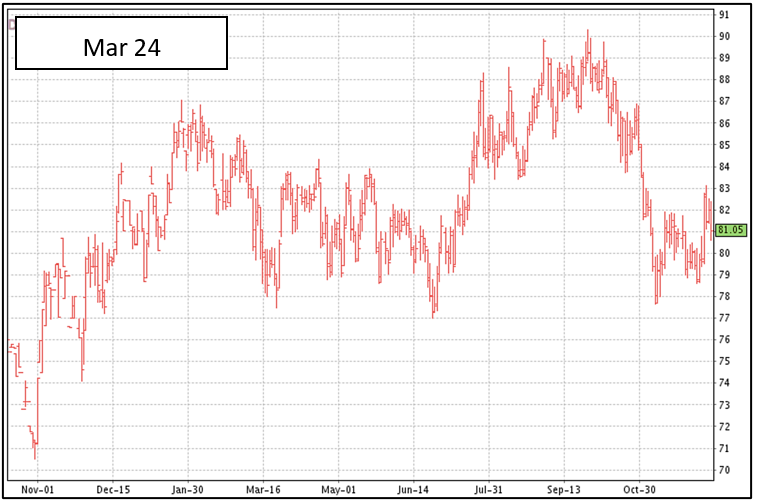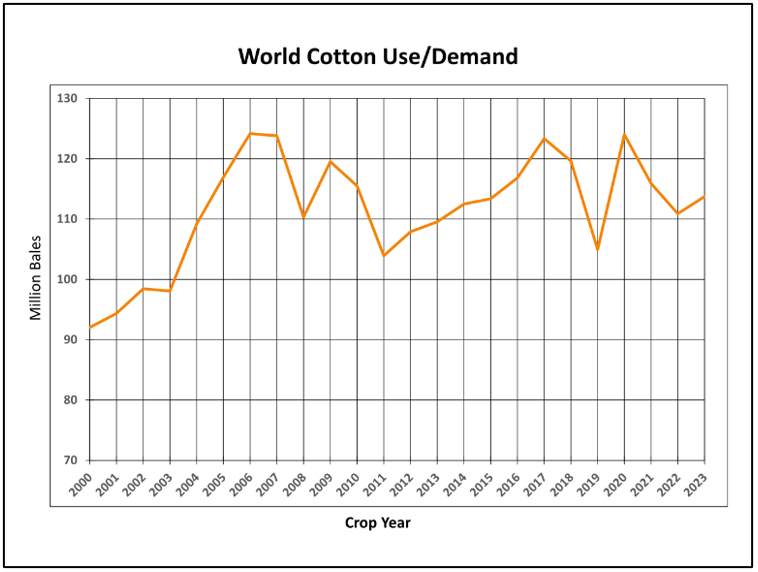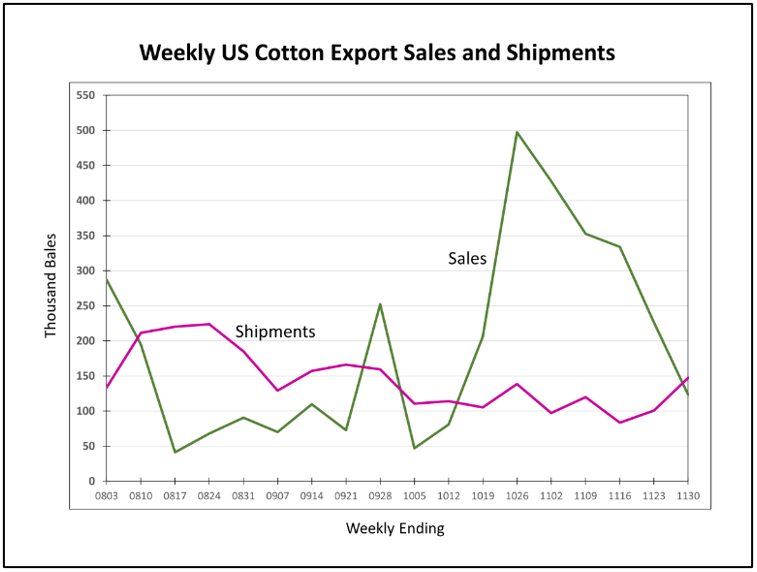Don Shurley, UGA Professor Emeritus of Cotton Economics
Cotton prices (March 24 futures) have made a bit of a recovery since the most recent dip and low to the 78-79 cents area. While far from a “happy place”, hopefully this signals that prices have recovered, trying to “stabilize”, and move higher. Prices (March 24 futures) currently stand in the 81 to 82 cents area, moving parallel in a 4 to 5 cents price range—mostly between 78 and 83 cents.
–
There continues to be much concern and uncertainty about demand and the resulting sometimes weak pace of US exports. It’s worth a few comments here to help in understanding the economics of demand.
- Only a portion of demand is due to price. Quantity demanded could increase if price declines and decline if price rises. This price effect can be a little or a lot. It depends on other factors.
- Demand also depends on many other factors outside just price. This includes competition in the price and availability of similar products—consumers preference. Consumer income and other factors impacting consumers income and economic well-being—the value of the dollar, inflation, interest rates, etc.
- If the objective of an industry is to “improve” or grow demand, it’s not just a price and income problem. What can be done to increase uses for the product? What can be done to make the product more desirable for the consumer? What can be done to make the product more competitive with other products?
In cotton’s future, all these factors are important for each segment of the supply chain from grower to retail and includes wovens, non-wovens, and cottonseed. The US Cotton Trust Protocol, for example, attempts to expand market share reaching those desiring sustainability, transparency, and traceability.
World cotton mill use/demand for the 2023 crop year is currently projected to increase 2½% from last season—but this is over 3 million bales lower than USDA’s projections earlier in the year and lower than in 4 of the previous 6 years.
–
Demand is a concern. Specifically, it’s more difficult for the market to gain traction and find reason to push prices higher when buying is erratic and uncertain. Export shipments need to average roughly 274,000 bales per week to meet USDA’s current projection for the 2023 crop marketing year. We are currently, and have not been, anywhere near that pace thus far.
–





